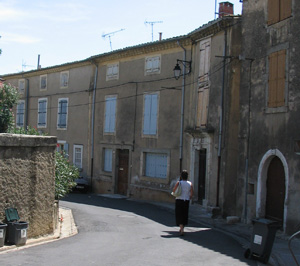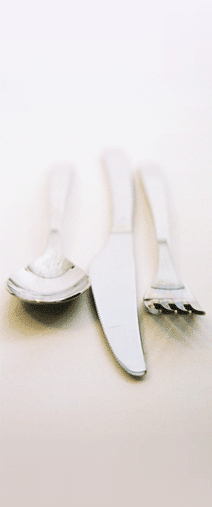This was written in September 2006 and I called it a Second Epiphany.
Incredible to think it is close to eight years ago now!
It was in November 2003, just three years ago when I had a second epiphany.
By this I mean a moment when my thoughts clarified, and I found a way out of my problems of the time.
James Joyce defines an epiphany as “A sudden spiritual manifestation”, the OED gives as it ‘s meaning, after the religious definitions, : “a sudden and important realisation”, and that description will do me fine.
My previous mention of an epiphany was in my very second blog, in February of 2004, when I realised that I wasn’t going to be a teacher and decided, a decision I have never regretted, that I would do what I enjoyed most and become a cook.
That was in 1972, thirty one years prior to 2003.
In 2003 I had been chef and proprietor of my restaurant, “Dwyers”, in Waterford for fourteen years. It was a successful restaurant but as time went on running it was becoming more and more stressful..
Running a restaurant takes an enormous amount of time.
Not only does one have to be an expert chef (or at least employ one) but also a skilful bookkeeper, be well versed in employee relations, have an ability to charm customers, be a skilled self publicist, and an expert hygienist. One must have an ability to do all the jobs in the restaurant at a moments notice and must always realise that every night off and every holiday has to be paid for from ones own pocket.
Of course it has its rewards, it is creative, lively and stimulating and it is always satisfying to be ones own employer.
That last factor is of course also the most dangerous.
Having been ones own employer it is extremely difficult to imagine working for someone else.
I once read a restaurant critic state that restaurants were such a transient business that he thought that ,like cats, restaurants should be given credit for seven years existence for every year they managed to survive.
At that reckoning Dwyers was 91 years old, a respectable age to retire.
More importantly I was 54 years old myself and I was beginning to feel that running restaurants was a young mans game.
I can’t say I reached this decision lightly.
Running ones own business becomes a bit like rearing a child.
It can become very difficult to let go at the appropriate time.
In November of 2003 Sile and I had just come back from a few days in St. David’s in Wales.
During most of my time there I had been worried and phoning the restaurant because we were having problems with blocked sewage pipes
(not a pleasant thing for a restaurant)
The thought was striking me that the business was running my life even when I was away.
It was also dawning on me (it had dawned on my wife some time previously) that the moment to sell the restaurant was at hand.
I was still being faced with the problem with what to do with my life afterwards.
This was the moment of the epiphany.
I decided that I should ask myself the same question I had asked myself thirty one years before.
What would I really enjoy doing?
Since the early years of our marriage we had been going to France on our annual summer holidays.
Initially we had gone with Sile’s sister Una and her family, four adults and six children, latterly we had also gone with a group of contemporaries, relations and friends.
On all of these holidays, and by my own personal choice, I was the designated chef. I discovered that to cook for a mere eight to ten people was a pleasure and relaxation from the stresses of cooking and running a restaurant. It was a reminder of why I took up cooking in the first place.
Couple that with the delights of shopping in the markets, shops and even supermarkets of France and I was in my element for the holiday.
It was from this that I found the answer to my question.
This was the moment when I suddenly saw the future.
Instead of going into a sudden boring retirement, or facing employment by someone else (on the unlikely event of it being offered to a man in his middle fifties) I could do what I loved.
Cook for small numbers of people in France.
We could buy and operate a Chambres d’Hote in France.
There is a difference between the Irish concept of B&B and the French Chambres d’Hote.
The French concept is very much more that of visiting the home of the host and to this end the proprietor usually eats with the guests at the same table.
We had used the French lodgings on our travels and enjoyed the experience very much.
This I suddenly saw would be a way to live my life in the future.
That was in November in 2003, amazingly by June of 2004 we had cooked the last meal in the restaurant and we had successfully sold it on.
By late September the deal was signed sealed and delivered and we were living in our present house in Griffith Place here in Waterford.
Since the restaurant life hasn’t exactly comprised of lolling around in boredom. I do have certain jobs which I have maintained, as consultant chef and even doing some local culinary journalism. Not to mention flying about the country and the continent of behalf of Euro-Toques.
We have however found time to start looking for a place to set up our Chambres d’Hote.
This was at last realised in August of this year.
We found our ideal house.
As we looked we began to realise the various essentials we needed for our house in France.
It had to be:
Big enough to have four bedrooms each with its own bathroom.
This would give us three to let (or give to visiting daughters) and one for ourselves.
It had to be within a very limited budget.
It must be far enough South to have a noticeably better climate than Ireland.
The sun was certainly going to be a factor.
We were sure that it had to be in a village.
We had stayed in too many houses in the country, owned by non residents, which had Fort Knox type fortifications against robbery. We knew that in villages neighbours looked after each other.
And we also wanted to be able to nip down the village for the morning croissants and even for a pichet in the café.
It had to have a small garden, (rare this in the centre of a village) but this had to be big enough to take a swimming pool.
It must have a certain age and character, we found that modern French villas were as soulless as the their Irish equivalents.
Lastly, we both had to fall for it.
La Presbytere in Thezan les Beziers has pressed all the buttons.
For me it was love at first sight, for Sile it had to wait until the second viewing.
You can see some pictures of the presbytery in its full tattiness here.
As I write the contracts for sale are before me and we are going out to the house next week , with designer and friend Clive Nunn, to put together our plans for its eventual restoration.
God knows what hoops we will have to jump through with French builders and French Mairies, with new neighbours and the constant problems of translation but now we have certainly opened a door in to another phase of our life, the final phase of the epiphany in November of three years ago.
It shows all the signs of being as much fun and as scary as our previous existences.
Roll on!

Sile walks towards the Presbytery in Thezan.
